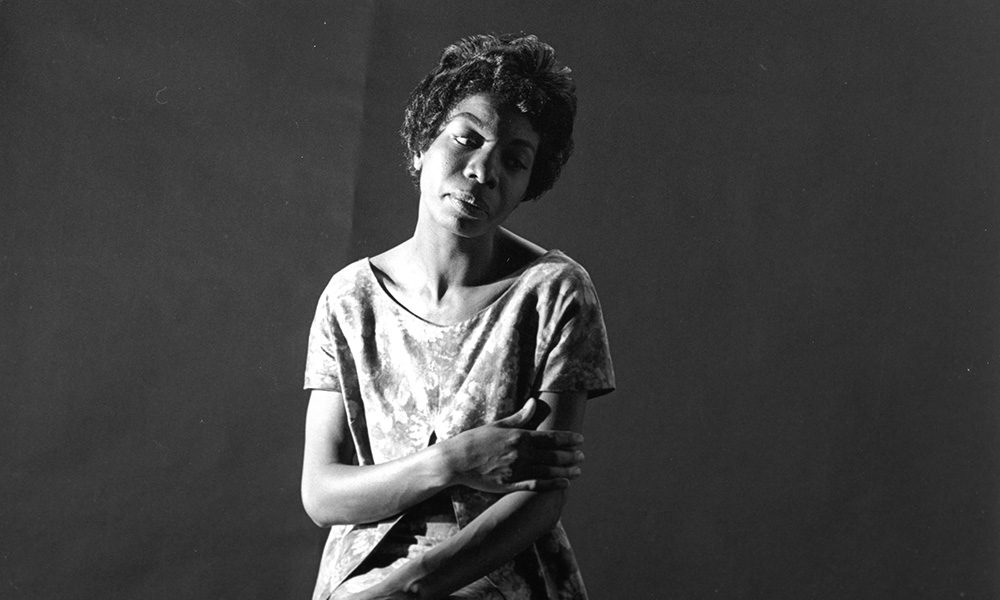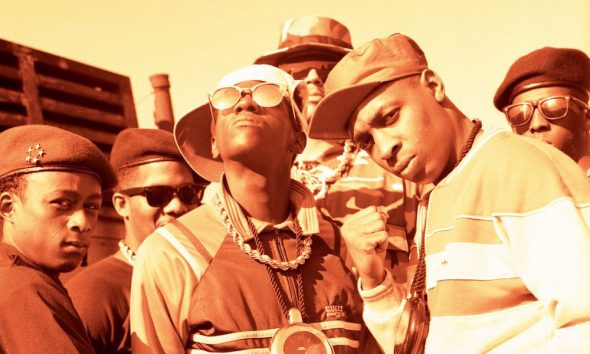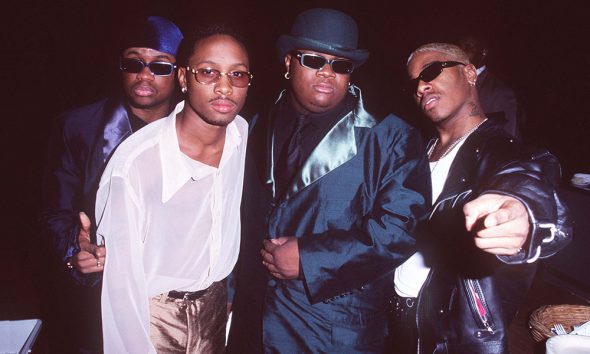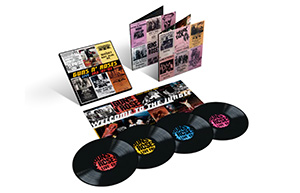‘Strange Fruit’: Billie Holiday and Nina Simone Transform A Haunting Poem
‘Strange Fruit,’ covered countless times, has become an influential rallying cry passed down through generations.

Many decades after it was first recorded by Billie Holiday, “Strange Fruit” continues to be terrifyingly resonant. The song, which verbalizes the horrors of racism in the American South, has been covered countless times by artists across genres, from Tori Amos to Andra Day. But two renditions of the song continue to stand out above all others: Billie Holiday’s unforgettable original and Nina Simone’s profound, straightforward take.
While Holiday’s interpretation may lead listeners to believe it’s an original composition, “Strange Fruit” was initially a poem set to music written by Jewish-American writer Abel Meeropol in 1937. It serves as a disturbing allegory between fruit on trees and Black lynching victims throughout American history, penned in response to a 1930 photo of Thomas Shipp and Abram Smith, two Black lynching victims. (The photograph reportedly “haunted [Meeropol] for days.”) Under the pen name Lewis Allan, Meeropol’s poem was published in The New York Teacher later that year.
Billie Holiday and Strange Fruit
Billie Holiday first performed “Strange Fruit” in 1939 at Café Society, New York City’s first integrated jazz club, after reportedly being introduced to the song by the club’s founder. In her autobiography Lady Sings The Blues, she wrote that the lyrics reminded her of her father, who died at the age of 39 after being denied medical treatment at a “whites only” hospital in Texas. (“Twenty years after Pop died, the things that killed him are still happening in the South.”)
While she was apprehensive to sing it due to fear of retaliation by white listeners, Holiday eventually made the song an integral part of her live performances.
Even with a jazz piano accompanying her, Holiday’s version, recorded in 1939, is incredibly macabre, resulting in a sonic dichotomy just as bone-chilling as its lyrics. Through jazzy coos, she describes “pastoral scene(s) of the gallant South” such as the scent of magnolia flowers filling the atmosphere, a serene setting later interrupted by the “smell of burning flesh” and the haunting image of “Black bodies swinging in the Southern breeze.”
The NAACP estimates the number of Black lynching victims rose in the late 19th century after the Civil War. The number of free Black people in the Southern United States created anger among white people, resulting in retaliatory, unwarranted hangings as a result of these social changes. Lynching isn’t just premeditated murder – it’s a way to limit social, political and economic progress for Black Americans through fear and intimidation. Civil unrest and strict social laws in the 1950s and 60s also restricted advancement for people of color, creating limited progress for Blacks based on unresolved racial tension, despite a decrease in lynchings across the country. In short, not much had changed.
Nina Simone and Strange Fruit
With this in mind, “Strange Fruit” was a perfect song for Nina Simone to cover. She often brought attention to deeper social issues through her recordings and performances. “[‘Strange Fruit’] is about the ugliest song I have ever heard,” Simone once said. “Ugly in the sense that it is violent and tears at the guts of what white people have done to my people in this country.”
Featured on her 1965 album Pastel Blues, Miss Simone’s take on “Strange Fruit” finds her utilizing solemn, piano instrumentation (one of the sonic hallmarks of the project) in order to throw a thematic, emotional gut punch that still reverberates to this day. Her transformative version employs a minimalist sound palette rather than a jazzy one, forcing you to sit with the heavy imagery and her tangible, grief-filled tone.
Simone is performing as not an artist, but as a human with a visceral connection to the subject at hand. As she plinks away at the keys, she cries out on behalf of her race. Her emotionally-strained voice shudders as she describes a deceased Black body rotting in the sun. As she sings of the body being removed, she wails to the sky, begging for the violence to stop without saying it outright.
“If you look at all the suffering that Black folks went through…we all wanted to say [something about racial injustice], she said it,” entertainer and activist Dick Gregory says of Simone’s fearlessness in the 2015 documentary What Happened, Miss Simone? Elsewhere in the documentary, Simone’s daughter Lisa Simone Kelly adds that “anger is what sustained” her mother, and that she felt most fulfilled fighting and singing for a bigger and deeper purpose.
The legacy of Strange Fruit
“Strange Fruit” continues to serve as a call to arms for those fighting racial inequality in the United States. Countless artists across genres have covered or sampled the track – a testament to how the song continues to hit a nerve for both Black artists and allies alike. Diana Ross, Jeff Buckley, Annie Lennox, and Kanye West recorded some of the more popular iterations. In 2002, the song was added to the National Recording Registry, which recognizes “culturally, historically, or aesthetically important” American recordings.
One of the reasons that “Strange Fruit” continues to be covered and sampled is that its true meaning – which draws attention to the horrors of racial violence – highlights an issue that has always been present, but has yet to be rectified. The ongoing, unjust treatment of Black people in the United States confirms there is still “blood at the root” of our country’s social, racial, and moral foundation, and there is still work to be done in order to make long-lasting change.
In February 2020, the Emmett Till Antilynching Act – named after the 14-year-old whose lynching death in 1955 sparked outrage – was passed by the House of Representatives. Yet, despite radical changes being implemented in the 81 years since the recording of “Strange Fruit,” the song’s underlying theme continues to resonate with 21st century racial and social issues. The death of George Floyd at the hands of police in May 2020, as well as the suspicious lynchings of many Black Americans which made headlines over the same summer, ignited fury across America.
“Strange Fruit” was in no way the first anti-racism song, but it was one of the first to force listeners of all races to stew in the taboo topic and confront it head-on. Holiday’s startling rendition captures audiences to this day. Her courage in verbalizing such a horrifying and deeply personal tale is unfathomable. Simone’s stirring cover solidified her position as an artist who could accurately depict what her community was feeling. It was punctuated by emotion that transcends genre and generation. Given the track record of America, “Strange Fruit” will remain frustratingly resonant for future generations. However, there is hope in our hearts that change is possible, and that its historical and social relevancy won’t ring nearly as loudly as it does today.














